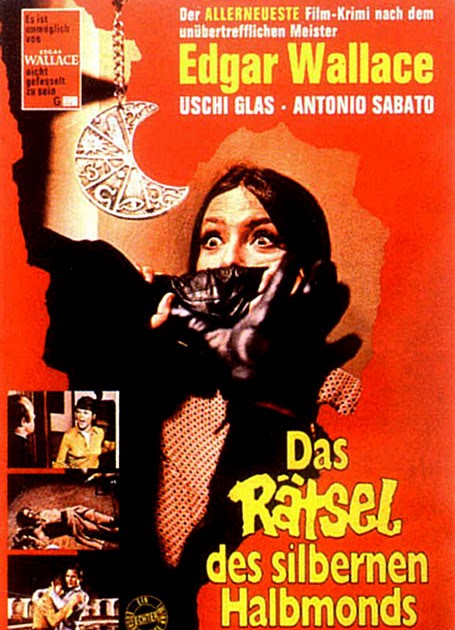Seven Blood-Stained Orchids is a 1972 crime thriller directed by Umberto Lenzi. It’s usually considered to be a giallo but it’s a bit more complicated than that. This was a West German-Italian co-production and the German company involved was Rialto Film. Rialto of course were responsible for the wonderful Edgar Wallace krimi cycle of the 60s and early 70s. That krimi cycle was a definite influence on the evolution of the giallo.
The two genres have a number of things in common, the most important being that both emphasised style over content. The plots tended to be fairly outrageous and plot coherence was not a major consideration in either genre. Seven Blood-Stained Orchids belongs to an intriguing group of early 70s movies that were in fact marketed in Germany as krimis, or krimi-giallo hybrids. It is however a genuine giallo.
The main source material for this movie was Cornell Woolrich’s novel Rendezvous in Black. For the German release the claim was made that it was also based partly on an Edgar Wallace story, but this was simply an attempt to boost the movie’s chances at the German box office. The closing opening sequence used in the Rialto krimis was also added to give the impression that this really was a krimi. Lenzi wasn’t pleased by this but it worked and the movie did very well in Germany.
A psycho killer is stalking women (a black-gloved killer naturally) . A half-moon amulet is left by the body of each victim so the psycho becomes known as the Half Moon Maniac. One of his victims, Giulia Torresi (Uschi Glas), has a lucky escape. She is married to fashion designer Mario Gerosa (Antonio Sabato).
There seems to be no obvious connection between the victims until it is discovered that a couple of years earlier they all stayed at the same hotel, the hotel owned at that time by Giulia’s family.
Inspector Vismara (Pier Paolo Capponi) has assigned plain-clothes officers to protect the other likely victims but the police just don’t seem to be able to get their act together and women get killed under their very noses.
Mario (fairly reasonably) comes to the conclusion that he can’t rely on the police so he decides to play private detective. As the killer accumulates more victims both Mario and the police always seem to be one step behind. Mario does go tantalisingly close to saving one victim, a woman confined in a mental hospital.
There is one promising clue, an American who used to eat regularly at the Torresi family’s hotel. And Mario comes across another clue – seven orchids all stained blood-red. But that clue seems to lead nowhere.
In desperation a trap is set for the killer, with slightly unexpected results.
There’s a very high body count and the murders are done in typical baroque giallo style (and several of them are quite impressive visual set-pieces).
There are false leads and plenty of deception. In two cases where the victim survives the police lead the murderer to think that those victims are dead. It was hardly an original idea to have the lead character decide to play private detective but in this film it makes sense. The police really do make a mess of things.
Lenzi considered this movie to be fairly clued and to some extent he was right. There are certainly clues that should awaken an alert viewer’s suspicions.
Antonio Sabato is not the most colourful or endearing of heroes. Marisa Mell has a small part which doesn’t give her any real opportunities. The supporting players are generally extremely good. The standout performance however is given by Uschi Glas. She has real screen presence and she makes Giulia a lively, likeable intelligent heroine.
The plot stretches credibility but if you’re watching a giallo and looking for plot coherence then you’ve picked the wrong genre. A giallo plot is not required to make sense or hang together and the more outrageous the plot the better.
Lenzi used to be better known for some of his notorious later movies (such as his cannibal movies) but his earlier giallos have since grown in reputation and it’s those giallos on which Lenzi should be judged as a director. And he was a fine giallo director. He made better giallos than this one (the wonderfully offbeat Spasmo is his masterpiece) but Seven Blood-Stained Orchids is still a very solid very entertaining effort. Highly recommended.
The 88 Films Blu-Ray release offers a lovely transfer, and offers both the Italian and English dubbed version. All Italian movies of this era post-dubbed so whether you watch the Italian or English version really doesn’t matter. There’s an audio commentary plus a couple of interview, the interview with Lenzi being a very worthwhile extra.




